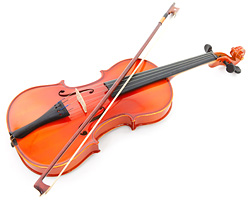Advertisement
Grab your lab coat. Let's get started
Welcome!
Welcome!
Create an account below to get 6 C&EN articles per month, receive newsletters and more - all free.
It seems this is your first time logging in online. Please enter the following information to continue.
As an ACS member you automatically get access to this site. All we need is few more details to create your reading experience.
Not you? Sign in with a different account.
Not you? Sign in with a different account.
ERROR 1
ERROR 1
ERROR 2
ERROR 2
ERROR 2
ERROR 2
ERROR 2
Password and Confirm password must match.
If you have an ACS member number, please enter it here so we can link this account to your membership. (optional)
ERROR 2
ACS values your privacy. By submitting your information, you are gaining access to C&EN and subscribing to our weekly newsletter. We use the information you provide to make your reading experience better, and we will never sell your data to third party members.
Materials
Newscripts
Fungal Violins, The Art Of Chemistry
by Craig Bettenhausen
October 3, 2012
| A version of this story appeared in
Volume 90, Issue 40

The violins crafted by Antonio Stradivari are famous for their superior sound. Produced in Italy around the turn of the 18th century, a Stradivarius can fetch tens of millions of dollars at auction. Research under way at the Swiss Federal Laboratories for Materials Science & Technology (Empa) could lead to affordable violins with a sound rivaling that of a Stradivarius—through the magic of fungi.

The tone of the famous instruments is thought to be partially due to a special stock of wood Stradivari used, which came from trees that grew in an unusually cold period from 1645 to 1715.
Replicating those climate conditions isn’t feasible, so Francis Schwarze is taking a different tack. The Empa scientist is using fungi to make “mycowood,” a material that has some of the same properties of Stradivari’s wood. Schwarze makes his mycowood by treating spruce and sycamore with the fungi Physisporinus vitreus and Xylaria longipes.

“The unique feature of these fungi is that they gradually degrade the cell walls” of the wood, Schwarze explained recently at a symposium at the Max Delbrück Center for Molecular Medicine, in Berlin. “But even in the late stages of the wood decomposition, a stiff scaffold structure remains via which sound waves can still travel directly.” In other words, P. vitreus and X. longipes may munch on the wood, but they leave behind its resonance and structural integrity.
In a famous 2009 experiment, a violin built with Schwarze’s mycowood was pitted against a genuine Stradivarius made in 1711 in a blind listening test. Not only did the expert judges prefer the sound of the mycoviolin over the Strad by a 2:1 margin, 63% of them also mistook Schwarze’s instrument for the 300-year-old masterwork.
Building on that success, the Empa team is now scaling up the fungal modification process and developing “standardized conditions to achieve reproducible results,” Schwarze says, with a goal of making 30 mycowood violins.
Kat Andonucci had not taken a single chemistry class when she was contacted by chemistry professor Andy Robak about a project he had in mind. But Andonucci, a visual and verbal arts major with a background in biology, turned out to be the perfect candidate to join Robak in exploring chemistry through photography.

View Enlarged Image
The project, titled “The Art of Chemistry,” earned the junior at Keuka College, in New York, course credit in chemistry and the admiration of chemistry and art faculty alike. The complete series of pictures was on view at the college’s Lightner Gallery last month.
Robak and Andonucci prepared and photographed roughly 25 chemistry demonstrations over the course of the 2011–12 school year. “Often the reactions we tried did not work the first time,” an experience that many students don’t get until they try real research, Robak says. For example, Andonucci took nearly 1,000 shots of fluorescein mixing with aqueous solutions to find the lighting, apparatus, and technique needed to capture the beauty of the green swirls generated by the diffusion.
“One of the original goals of the course was to use some of the awesome visuals of chemistry to get nonscientists interested in chemistry,” Robak says. He and Andonucci already have had success on that score: Erik Holmes—Andonucci’s boyfriend, photography assistant, and frequent hand model—enrolled in the general chemistry class at Keuka this year.



Join the conversation
Contact the reporter
Submit a Letter to the Editor for publication
Engage with us on Twitter